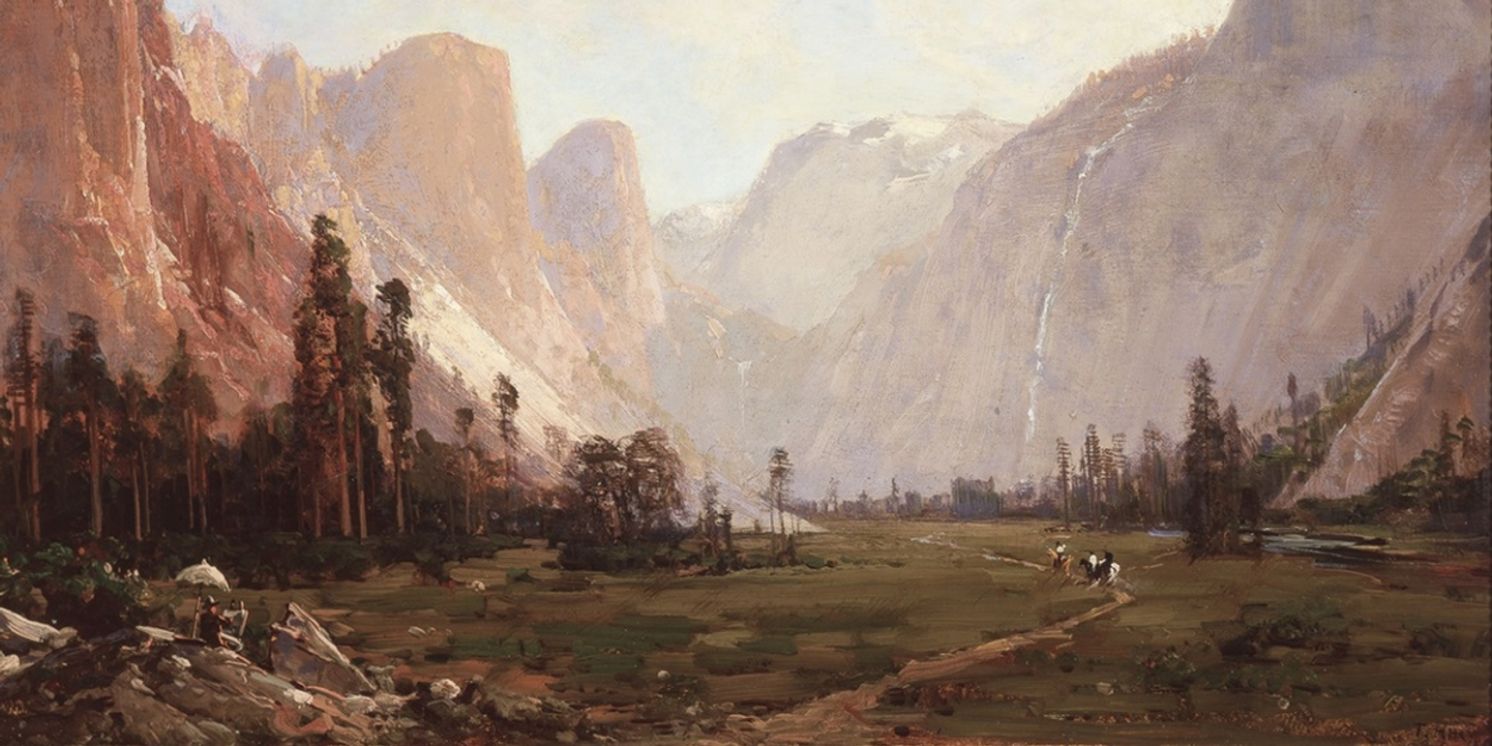Langson IMCA to Present 'Spiritual Geographies: Religion And Landscape Art In California, 1890–1930'
The exhibition features 35 works accompanied by rare books and archival materials.

UCI Jack and Shanaz Langson Institute and Museum of California Art (Langson IMCA) is presenting Spiritual Geographies: Religion and Landscape Art in California, 1890-1930, a new exhibition exploring how various religions influenced representations of California's wilderness and countryside during a period of rapid growth and diversification of the Golden State's population. The selection of 35 works accompanied by rare books and archival materials invite viewers to consider how religious ideas were conveyed through landscape painting and religious texts utilized landscape imagery to construct spiritual meanings.
Artworks by these Impressionist and early modernist artists-who were also readers and writers of religious publications-contributed to the national perception of California as a mystical and diverse place, tolerant of old and new sacred beliefs.
On view from March 2 through June 8, 2024, Spiritual Geographies is organized by Langson IMCA Assistant Curator Michaëla Mohrmann, PhD, and divided into four thematic groupings, centering on nature mysticism, Protestant Evangelism, Theosophy, and Catholicism. Together, the sections trace how these four spiritual traditions informed depictions of California's natural scenery while the landscape's majestic beauty simultaneously expanded people's understanding of the sacred.
Mohrmann said, "By the late 19th century, California represented a spiritual frontier to established religions pursuing converts and to new spiritual communities seeking nonjudgmental neighbors. Yet it was the state's awe-inspiring landscape and its mild climate's seemingly miraculous healing properties that endowed California with mystical qualities captured by the period's plein air painters."
The exhibition's first section, "Nature Mysticism from Painting to Print," presents landscapes in dialogue with the late 19th-century drawings and writings of naturalist John Muir. Artists represented include Maurice Braun, Thomas Hill, and Alfred Richard Mitchell. Muir advocated for the federal protection of wildlands, such as Yosemite Valley and the Sierra Nevada mountains, and wrote about nature's capacity to inspire cosmic insights and used art to illustrate his ideas about spirituality.
The second section, "Land as Holy Scripture for Protestants," examines how Protestant piety, including the practice of regularly reading the Bible, influenced perceptions of California's landscape. This grouping features early 20th-century landscape paintings whose titles reference the Bible as well as church hymns and Christian poetry.
William Wendt's Gentle Evening Bendeth (1938), for example, alludes to a popular hymn regularly sung in Protestant churches. The title of George Henry Melcher's The Eternal Hills (after 1907) contrasts the unchanging topography of Topanga canyon with its agricultural transformation. Melcher's emphasis on industriousness and the taming of nature calls to mind the Protestant work ethic that viewed prosperity as indicative of divine favor and nature as a gift for humankind's use.
The third section, "Theosophy's Harmonious Landscapes," explores the influence of San Diego's Theosophical Society on many Californian artists during this period. Founded in 1875, Theosophy sought to express universal truths by synthesizing the study of nature with concepts from science, occultism, and ancient faiths, such as Hinduism, Judaism, and Buddhism. Maurice Braun, Leonard Lester, Alfred Richard Mitchell, Agnes Pelton, and Henrietta Shore communicated Theosophical concepts and practices, including reincarnation and meditation, through artworks depicting nature's cyclicality and serenity.
El Cajon Mountain (between 1909 and 1918) by Maurice Braun conveys the value Theosophists placed on tranquility alongside what he called "the richness and optimism" of the California landscape. The Theosophical aspiration to achieve inner balance and external harmony is eloquently represented in Lester's night scene Twilight Moonrise (1934).
While living on Long Island, New York, and later in the Californian desert near Palm Springs, Pelton experimented with landscape painting and abstraction, inspired by her interests in nature and Theosophical beliefs. The peaks in San Gorgonio in Spring (1932) had a special significance to Pelton's friends in the Theosophical community, who asserted that the mountains were spiritual guardians and the main pass was a portal to another dimension. The Cahuilla tribe, who allowed Pelton to paint on their land, also regarded the range, which they called Kwiria-Kaich, as sacred.
The exhibition's final section, "The Catholic Past for a Protestant Future," examines a period in the state's history when the influx of Protestants by 1900 had eroded the dominance of Catholics. Many followers of Catholicism were Indigenous or mixed-race Mexican Americans, like the main character in the popular 1884 novel Ramona, which is referenced. Romanticized depictions of missions in ruins suggested that these people would eventually vanish like the ruins themselves. In fact, some missions remained in active use by local Indigenous communities for worship, shelter, and everyday activities.
The Santa Inés Mission (between 1897 and 1899), an early mission painting by Edwin Deakin, portrays the church complex as an empty, decrepit structure. By contrast, Julie Mathilde Morrow's later, more sentimental painting In the Mission Garden, San Juan Capistrano (1928) emphasizes the beauty of Catholic colonial buildings and their abundant gardens. Such works reinforced the missions' appeal as tourist attractions while repressing their complicated history as emblems of colonization.
"Spiritual Geographies shines a distinctive light on the work of California Impressionists, offering perspectives that connect nature and spirituality and artistic interpretation," said Langson IMCA Museum Director Kim Kanatani. "This is a hallmark of Langson IMCA-to reveal, reconsider, or discover new aspects of artworks in our permanent collection in ways that continue to inspire us today."
Public programs accompanying the exhibition will be announced in February 2024 at imca.uci.edu and @langsonimca.

Videos

